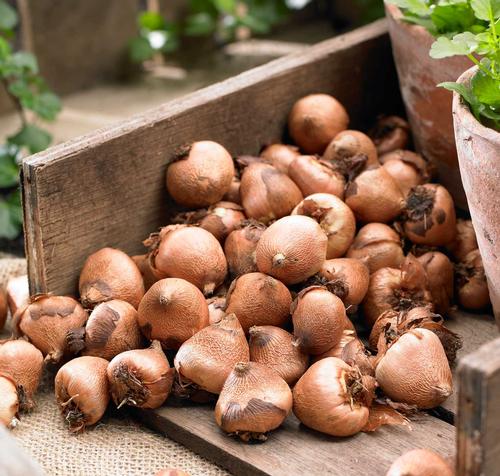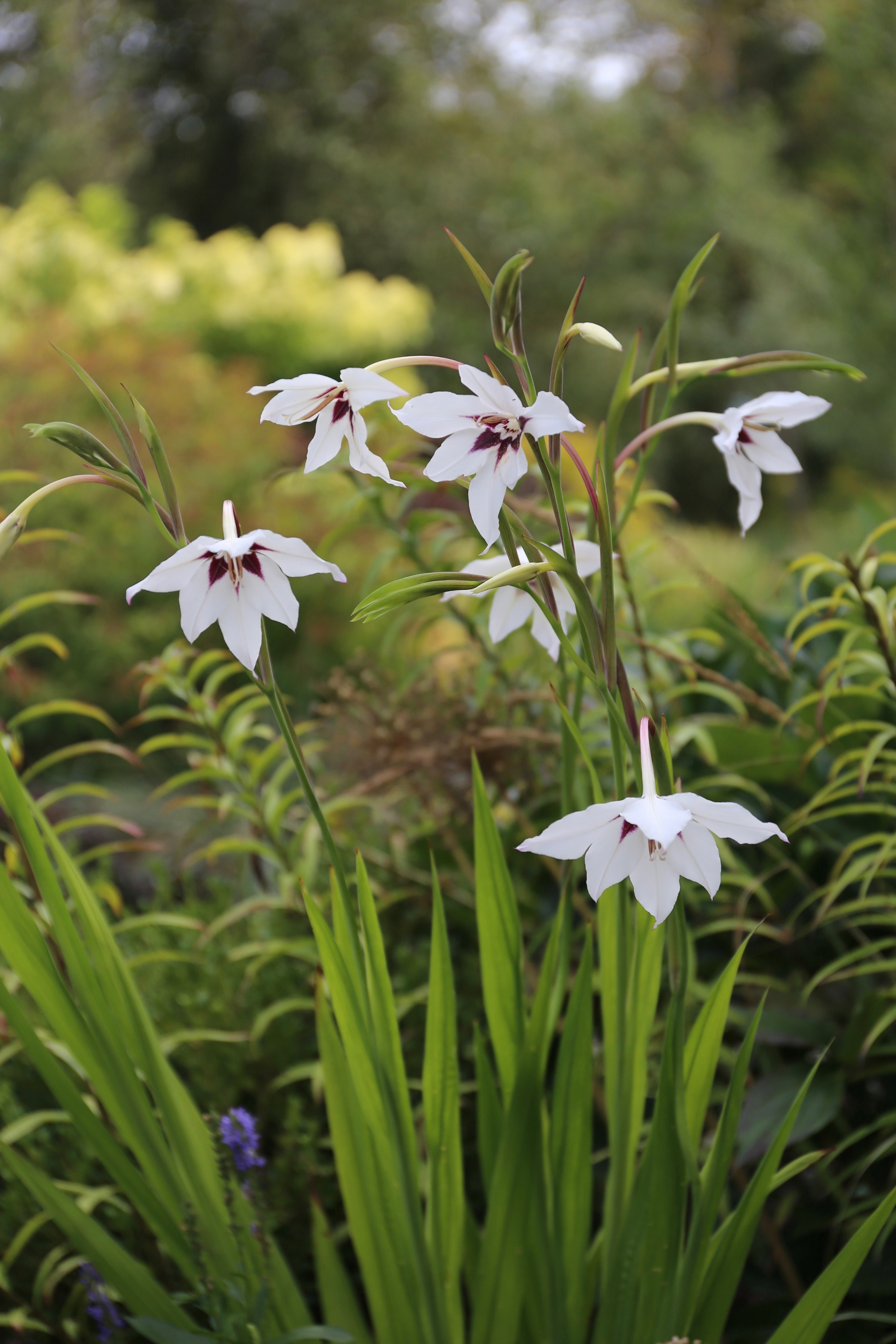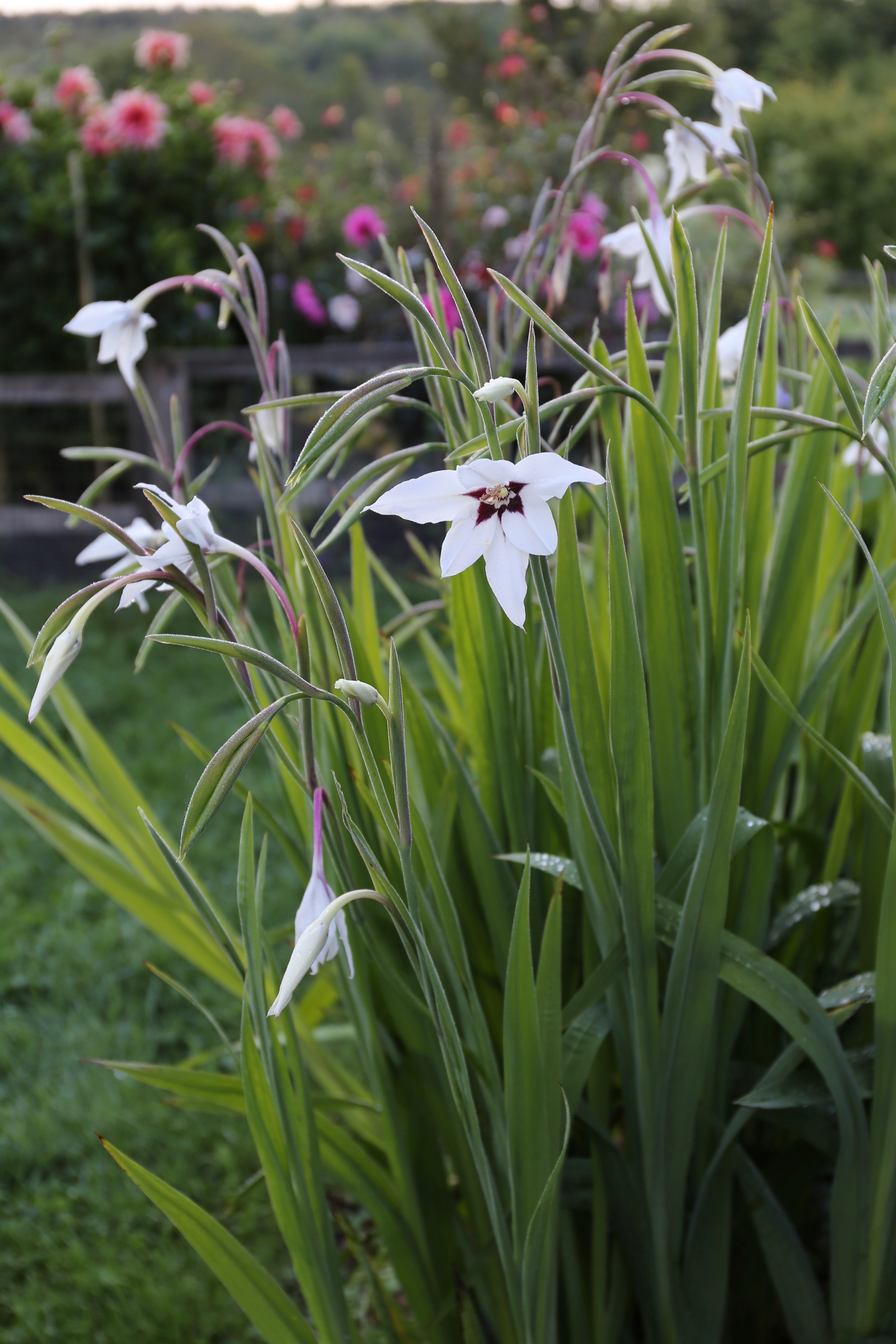Your Guide to Planning, Planting, and Growing Acidanthera
Acidanthera is a summer-blooming bulb in the gladiolus family. The plants have upright, sword-like foliage and fragrant white flowers in late summer and early fall. Acidanthera is easy to grow in any sunny garden and will also grow well in containers. This plant is known by many names, including peacock lily, Gladiolus murielae, Gladiolus callianthus and Abyssinian gladiolus.

Start with a Better Bulb
It’s easy to see the difference in quality when you compare two acidanthera corms side by side. Acidanthera bulbs are graded by size, measured in centimeters. Large corms grow into big plants that will give you a more beautiful display of foliage and flowers than smaller-sized bulbs.

Plan for Success
Shade and Sun: Acidanthera should be grown in full sun. If you have a shady garden, consider starting the corms in pots that can be kept in full to part sun. Once the plants have buds, they can be planted into your garden.
Zone: Acidanthera corms are winter hardy in zones 7-11. In colder areas, you can either grow the corms as annuals or dig up them up in fall and store them indoors for winter. Reference the USDA hardiness zone map HERE.
When to Plant: The corms will not tolerate freezing temperatures. If you are planting them directly into your garden, wait until the soil is warm -- around tomato-planting time. If you are growing acidanthera in containers, you can get started a couple weeks earlier.

Where to Plant Acidanthera
Flowerbeds and Borders: Acidanthera’s upright foliage adds interesting texture to perennial borders. The late summer flowers are a welcome surprise, opening when most other perennials have already come and gone. Enjoy acidanthera's haunting fragrance in the garden, and be sure to plant extras for cutting.
Containers: Acidanthera corms are slow to get started and can get overwhelmed by faster-growing plants. For this reason, it's best to start them in pots on their own. Plant about 8 corms per 12” pot. To extend the bloom time, plant a handful of corms every 2 weeks, starting at the end of April and continuing into early June.

Planting Tips for Acidanthera
Plant large corms 5-6" deep; smaller ones 4" deep.
For a nice, full look, plant acidanthera bulbs approximately 5" apart (on center) in the garden and 3-4" apart in containers.
Acidanthera needs warm, very well drained soil and lots of sun. If your soil stays cool through early summer and/or is on the heavy side, consider growing acidanthera in containers rather than in the garden.

What to Expect
Acidanthera grows slowly during the first half of the season. Once the plants get going, they grow quickly.
This plant’s flowers are borne in clusters on slender stems that rise from the base of the plant. These stems blend in perfectly with the foliage, so you may not notice buds until the flowers begin to open.
As with many other bulbs, acidanthera looks best when the corms are planted in clusters of 6 or more. Planting deeply (5-6") will help the plants stand tall without need for staking.

Caring for Acidanthera After it Blooms
In areas where Acidanthera is not hardy, you can treat the corms as annuals and discard them at the end of the season. Alternatively, you can store the corms indoors during the winter and replant them in spring. Wait until frost has damaged the foliage and then dig up the plants. Move the clumps to a sheltered location and allow them to dry completely. Cut off the foliage or gently pull it away from the dry corms. Store the corms in a dark, dry place with good air circulation. The storage temperature during the winter months should be approximately 60°F.
If you grow acidanthera in containers, you can simply bring the pots indoors in the fall, cut off the foliage, and store the corms right in the (dry) soil. In spring, dump out the soil, cut off any old foliage, and replant the corms.
In warm climates, acidanthera can form large, dense clumps (similar to crocosmia). Occasionally these may need to be divided.
To learn more about acidanthera, read: Fragrant Flowers for Late Summer.
Shop HERE for acidanthera.

